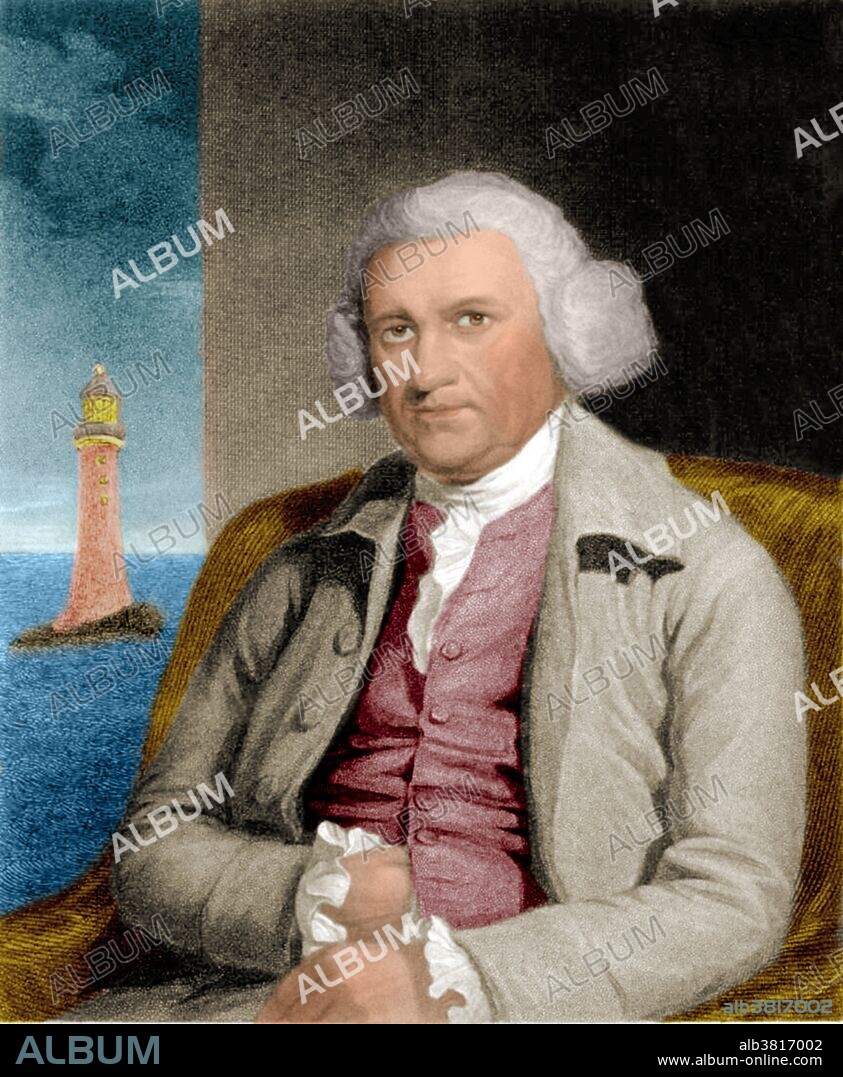alb3817002
John Smeaton, English Civil Engineer

|
Add to another lightbox |
|
Add to another lightbox |



Title:
John Smeaton, English Civil Engineer
Caption:
John Smeaton (June 8, 1724 - October 28, 1792) was an English civil engineer responsible for the design of bridges, canals, harbors and lighthouses. After studying at Leeds Grammar School he joined his father's law firm, but left to become a mathematical instrument maker, developing a pyrometer to study material expansion and a whirling speculum or horizontal top (a maritime navigation aid). He was elected a Fellow of the Royal Society in 1753, and in 1759 won the Copley Medal for his research into the mechanics of waterwheels and windmills. He pioneered the use of hydraulic lime (a form of mortar which will set under water) and developed a technique involving dovetailed blocks of granite. He is important in the history and development of modern cement, because he identified the compositional requirements needed to obtain hydraulicity in lime, which led to the invention of Portland cement. He he contributed to the Lunar Society and founded the Society of Civil Engineers in 1771. He coined the term civil engineers to distinguish them from military engineers. He is often regarded as the "father of civil engineering".
Credit:
Album / Science Source
Releases:
Model: No - Property: No
Rights questions?
Rights questions?
Image size:
3450 x 4193 px | 41.4 MB
Print size:
29.2 x 35.5 cm | 11.5 x 14.0 in (300 dpi)
Keywords:
18TH CENTURY • 18TH CENTURY, THE • 18TH • ART • ARTWORK • CELEBRITY • CIVIL ENGINEER • COLORIZED • COPLEY MEDAL • DRAWING • ENGINEER • ENGLISH • ENHANCE • ENHANCEMENT • EUROPEA • EUROPEAN • FAMOUS • FATHER OF CIVIL ENGINEERING • FIGURE • HISTORIC • HISTORICAL • HISTORY • HYDRAULIC LIME • ILLUSTRATION • ILLUSTRATIONS • IMPORTANT • JOHN SMEATON • MALE • MAN • MATHEMATICAL INSTRUMENT MAKER • MECHANICAL ENGINEER • MEN • NOTABLE • PEOPLE • PERSON • PERSONALITIES • PERSONALITY • PORTRAIT • POTRAIT • ROYAL SOCIETY • SCIENCE • SMEATON • WELL-KNOWN
 Pinterest
Pinterest Twitter
Twitter Facebook
Facebook Copy link
Copy link Email
Email

